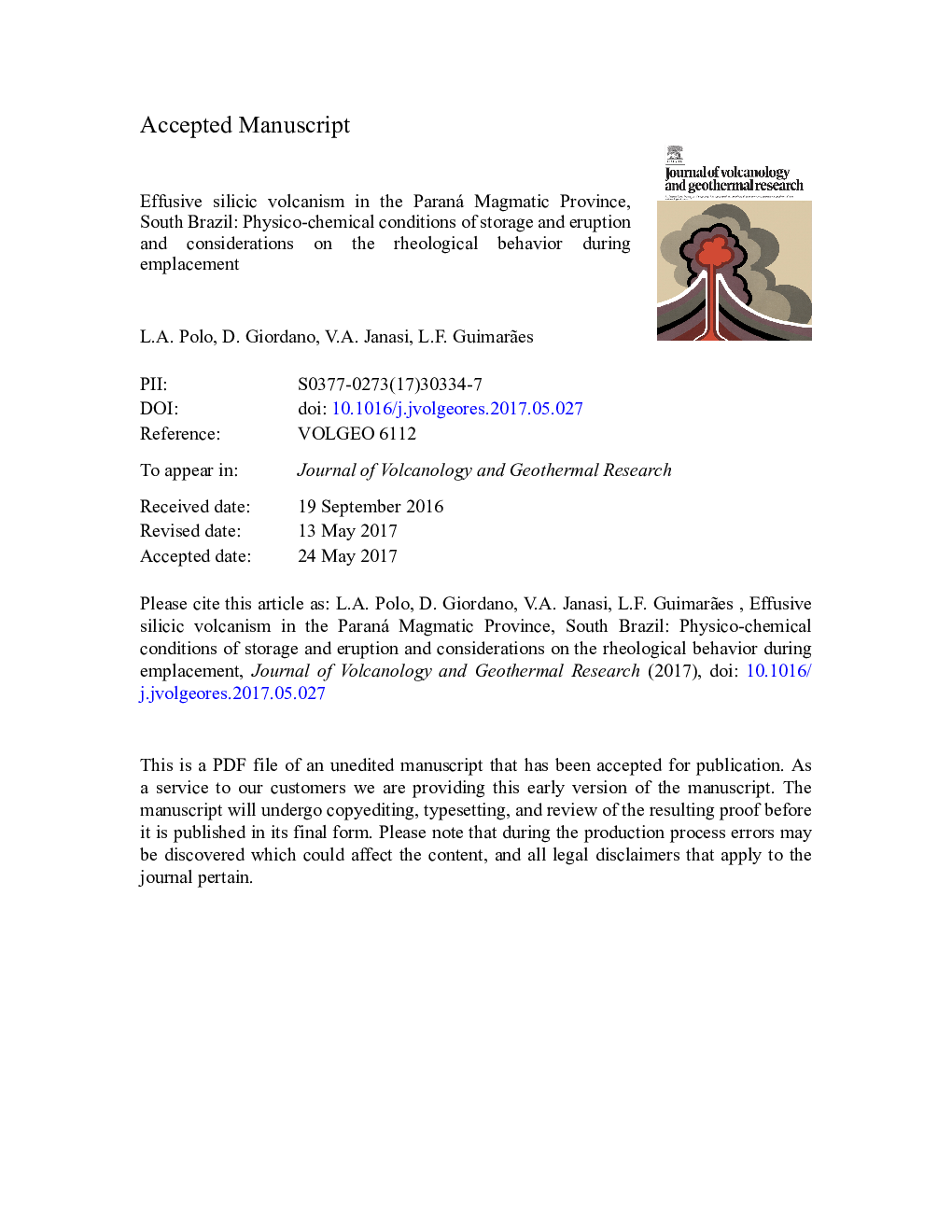| Article ID | Journal | Published Year | Pages | File Type |
|---|---|---|---|---|
| 8911340 | Journal of Volcanology and Geothermal Research | 2018 | 72 Pages |
Abstract
Expressive occurrences of effusive deposits were identified in silicic units from the Paraná Magmatic Province outcropping in a key area in south Brazil where three units with different compositions occur (Caxias do Sul dacites, CSd, Barros Cassal andesites to dacites, BCs, and Santa Maria rhyolites, SMr). Textural and chemical characteristics of phenocrysts, microphenocrysts and microlites suggest that crystallization started in a shallow magma chamber and continued during ascent to the surface. These magmas had an unique character (e.g., very high temperatures ~ 1000 °C and low H2O contents ~ 1-2 wt%), and formed several types of deposits that are clearly indicative of locally fed lava flows and had physical properties consistent with this mode of eruption (e.g., viscosities as low as 104.2 Pa·s at ca. 1000 °C for the CSd). The very low estimated H2O contents are a consequence of their petrogenesis (i.e., fractionation from tholeiitic basalts plus assimilation of crustal melts from water-poor granitic sources), and was probably a key factor influencing the non-explosive nature of these deposits. The comparatively higher viscosity calculated for the Santa Maria rhyolite (> 1-2 orders of magnitude greater than CSd) would make it a better candidate to generate expressive pyroclastic deposits, but this might be offset by its remarkably low H2O contents (â¤Â 1 wt%) and low discharge ratios.
Related Topics
Physical Sciences and Engineering
Earth and Planetary Sciences
Geochemistry and Petrology
Authors
Polo L.A., Giordano D., Janasi V.A., Guimarães L.F.,
